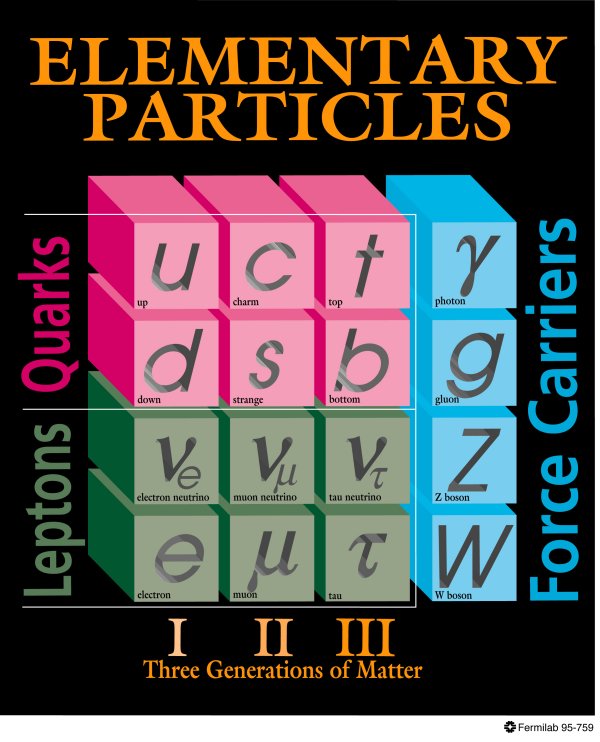Grand Unified Theory
The Standard Model
 The Standard Model explains the complex interplay between force carriers and building blocks. |
Physicists call the theoretical framework that describes the interactions between elementary building blocks (quarks and leptons) and the force carriers (bosons) the Standard Model. Gravity is not yet part of this framework, and a central question of 21st century particle physics is the search for a quantum formulation of gravity that could be included in the Standard Model.
Though still called a model, the Standard Model is a fundamental and well-tested physics theory. Physicists use it to explain and calculate a vast variety of particle interactions and quantum phenomena. High-precision experiments have repeatedly verified subtle effects predicted by the Standard Model.
So far, the biggest success of the Standard Model is the unification of the electromagnetic and the weak forces into the so-called electroweak force. The consolidation is a milestone comparable to the unification of the electric and the magnetic forces into a single electromagnetic theory by J.C. Maxwell in the 19th century. Physicists think it is possible to describe all forces with a Grand Unified Theory.
One essential ingredient of the Standard Model, however, still eludes experimental verification: the Higgs field. It interacts with other particles to give them mass. The Higgs field gives rise to a new force carrier, called the Higgs boson, which has not been observed. Failure to find it would call into question the Standard Model. Experimenters at Fermilab hope to find evidence for the Higgs boson and make further discoveries in the next few years.

0 Comments:
Post a Comment
<< Home